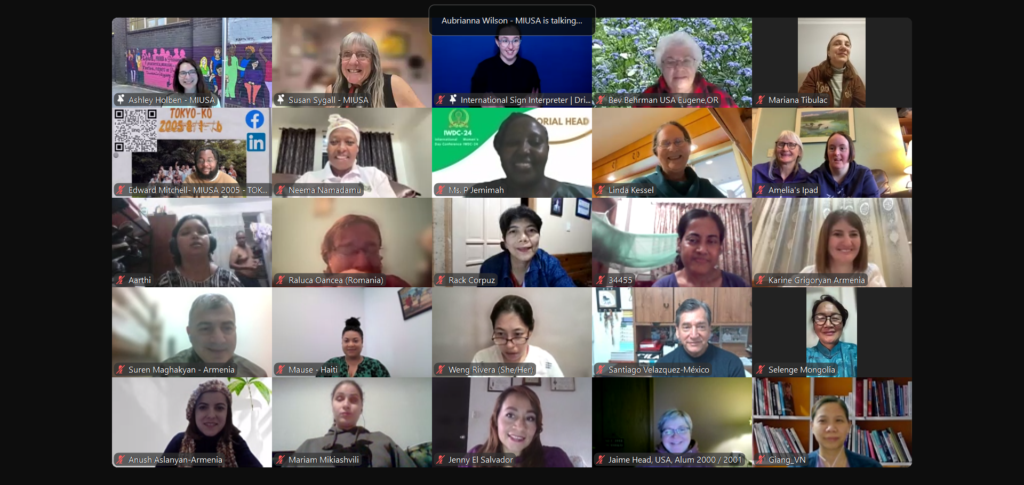As a wheelchair rider, special education teacher and avid traveler, I was thrilled to have the opportunity to travel to Washington, DC to speak to a group of 100 students from Russia. The college-age students were about to return to Russia after completing a semester of study in a U.S. college/university. These enthusiastic, intelligent, curious students had been selected for the highly competitive Year of Exchange in America (YEAR) Program which is administered by the Eurasia Foundation and funded by the U.S. State Department.
I was asked to speak about the history of the disability rights movement and disability justice in the U.S. This topic is usually met with lots of passion and enthusiasm by young people with disabilities throughout the world. However, there were only a few YEAR students with disabilities in this group, so I wondered how this talk would go over with non-disabled students who may not have been exposed to the experience of people with disabilities in their own country.
I was simply amazed at the reaction of the non-disabled YEAR Students. The U.S. Disability Rights and Inclusion Workshop was an optional session, so I was surprised when more than 60 students chose to attend. The students were highly engaged in the presentation. At the end of the session, when I asked if students had any questions, almost every hand went up. I was equally amazed by the questions they asked. Students asked for suggestions on how to become involved with disability rights and inclusion when they returned to Russia and how to become an ally and an advocate for improved accessibility, accommodations, education and the involvement of people with disabilities in their communities.
But perhaps I should not have been surprised. In this era of pandemics, climate change and a host of other social issues, more young people with and without disabilities are seeing that now is the time for them to truly “Challenge themselves and change the world,” ® rather than waiting for somebody else to make the world more equitable and inclusive.
Program organizers were also challenged to make changes for improved equity and inclusion. With a wheelchair-riding workshop leader in attendance, they had to address access and accommodation challenges. There was much to learn about how to book an accessible hotel room and that “ADA accessible” does not necessarily mean a wheelchair accessible room with a roll-in shower. Organizers also learned how to ensure that at least one of the large, chartered buses transporting the group had a wheelchair lift so that I could join the bus ride. I could have used a wheelchair accessible taxi, but that would have meant missing out on time interacting and connecting with students and staff during the bus tour. Separate is not equal.
At MIUSA, we are eagerly and optimistically looking ahead to spring, as we begin planning for a series of international exchange programs in 2022. It was wonderful to see that the spirit of wanting to change the world is felt by young people everywhere.
If you know of a young person with a disability who might be interested in coming to the US in a high school exchange or perhaps a young person with a disability from Russia who might be interested in a similar program, please visit our website for more information: https://miusa.org/resource/tipsheet/youthexchange
For me, well, I came home exhilarated, having felt the passion of so many students eager to learn and to return home to make a difference in their country.
I want to thank the staff at the Eurasia Foundation and the U.S. State Department and all the YEAR Students for making this such a positive and meaningful experience.
Sign up for our E-News






Manage Your Privacy